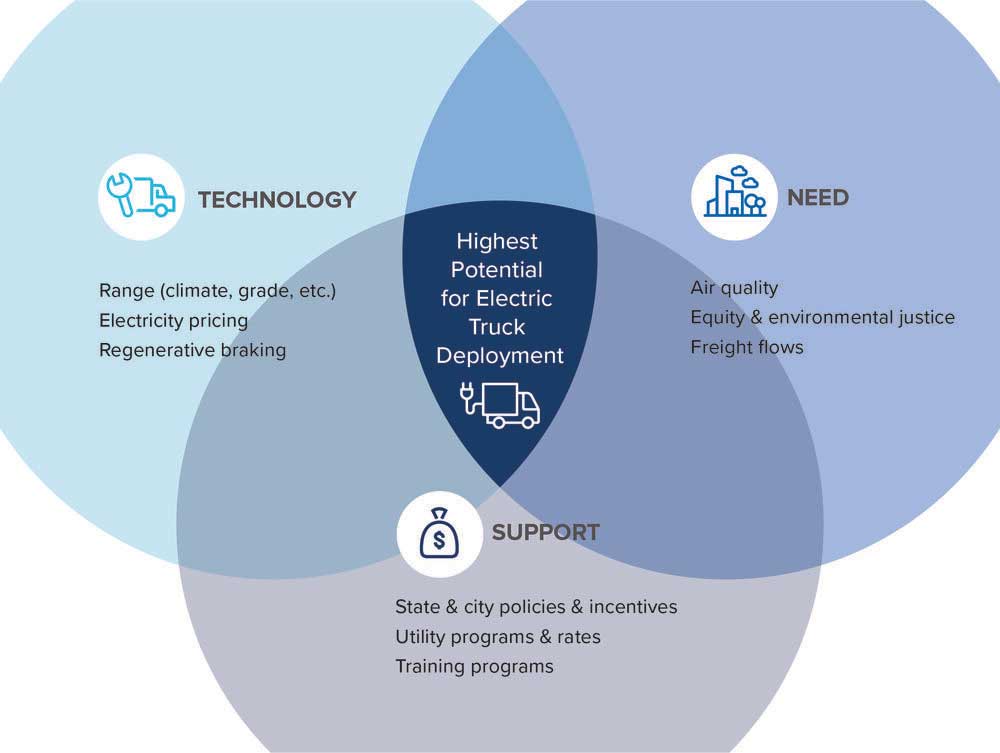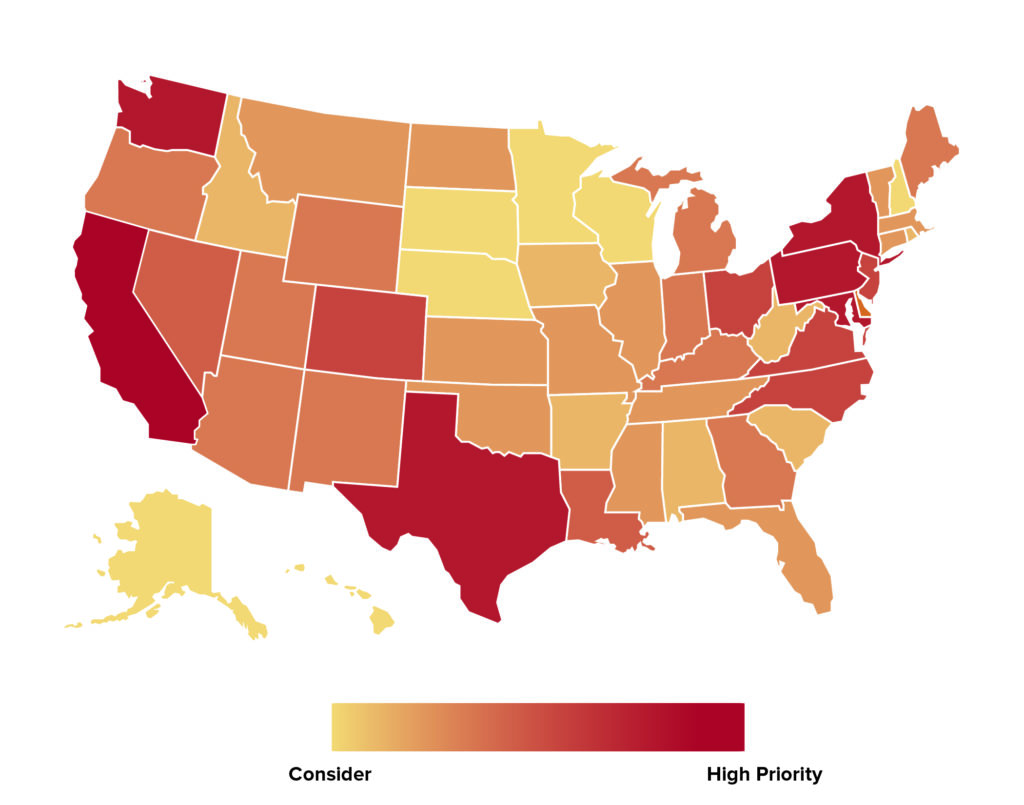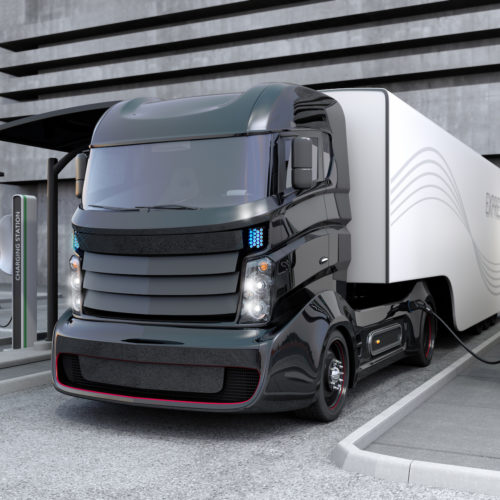
Electric Trucks Are Coming. Where Should They Go?
Electric trucks made national headlines earlier this month when a new study from Woods McKenzie projected that 54,000 electric trucks would be on US roads by 2025—approximately 27 times current stock. With an ever-increasing focus on climate solutions—particularly for the biggest emitting sector, transportation—it’s no surprise that production of medium- and heavy-duty electric vehicles seems to be headed for the express lane.
Electric truck deployments show no signs of stopping, even during the pandemic. In the last three months alone, California passed a historic zero-emission truck mandate, the Advanced Clean Trucks rule; New York City launched a Clean Trucks Program; and fifteen states and the District of Columbia committed to 30 percent zero-emissions medium- and heavy-duty vehicle sales by 2030 and 100 percent by 2050.
We know that electric trucks are coming. But where should they go? As fleets, utilities, OEMs, policymakers, and other industry stakeholders begin the long-term planning efforts to prepare for this emerging technology, which regions should they be prioritizing for deployments? These are precisely the questions the latest report from Rocky Mountain Institute (RMI) and the North American Council for Freight Efficiency (NACFE) seeks to answer.
High-Potential Regions for Electric Truck Deployments proposes a three-part framework that the industry can use to prioritize regions for electric truck deployments:
- Technology – Identify the regions that are most favorable to the unique attributes of the technology itself.
- Need – Identify the regions that exhibit the greatest need for the technology.
- Support – Identify the regions that provide the most support for the technology.
Where these three criteria overlap is considered a “hotspot” for near-term regional haul electric truck deployment—a high-priority region.
The report presents an initial analysis of where these hotspots exist in the United States. The analysis focuses on heavy-duty regional-haul trucking operations, which RMI and NACFE consider to be a prime candidate for electrification due to the segment’s relatively short-haul nature and return-to-base operations. Though the framework is applicable to all use cases. Regions are rated based on these criteria, resulting in a “heatmap” of electric truck potential by state, which distinguishes between regions fleets should consider to those that are the highest priority for electric truck deployments.
A detailed description of the analytical methodology, including metrics and data sources, can be found in the report’s Technical Appendix, and users can explore the data itself in the accompanying High-Potential Regions for Electric Trucks Data Analysis Tool, both of which are available for download.
Encouragingly, the analysis finds that regions favorable for electric truck deployments are found across the entire country. The regions with the highest potential for electric truck deployments include both Northern and Southern California, the Texas Triangle, Cascadia, the Rocky Mountain Front Range, and the Northeast. From a holistic perspective, these regions should be a high priority for anyone considering near-term electric truck deployments.
Yet there is still work to be done. No region—including the five listed above—is perfect for electric trucks. For example, Texas does not yet have any policies that support electric trucks. Oregon has not dedicated any funding to help cover the cost of the vehicle or charging infrastructure. Colorado’s climate is not ideal for battery performance, and its electricity grid could certainly be greener. And even California has relatively high electricity prices (though still cheaper than diesel on a per mile basis). Though when it comes to something as important as climate action, we can’t afford to let perfect be the enemy of the good.
Indeed, electric trucks are already in use, providing valuable lessons for the future. And as the technology matures and more fleets, utilities, and policymakers exhibit leadership across the country, electric trucks will be deployed with increasing acceleration, delivering not just emissions reductions, but better performance, economic development opportunities, and healthier and quieter communities. 54,000, here we come!
For more information on the framework and analysis, you can download High-Potential Regions for Electric Truck Deployments here.



